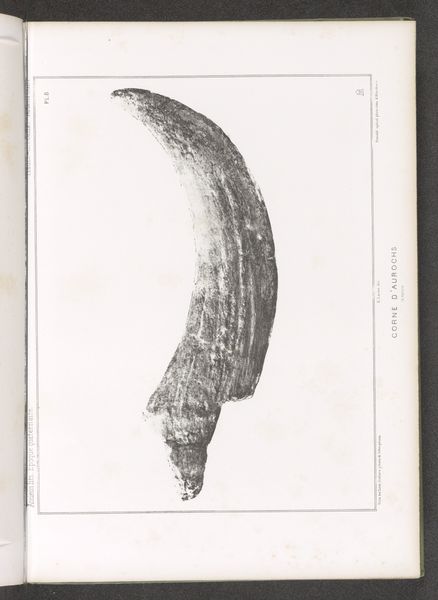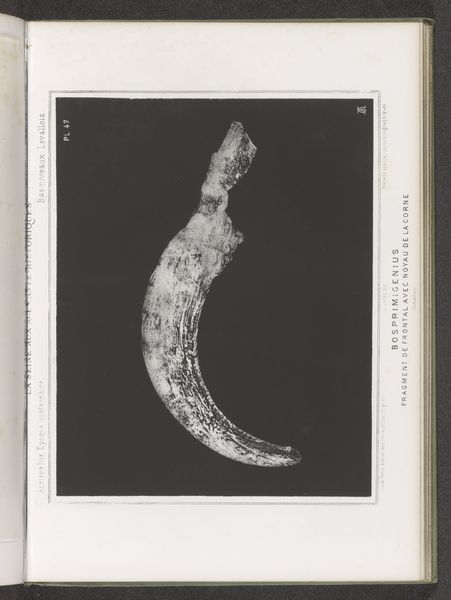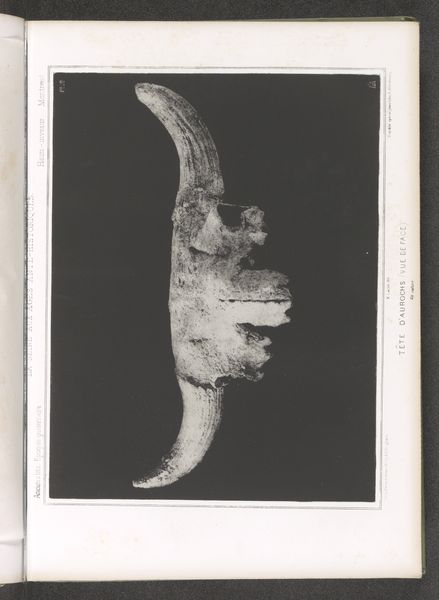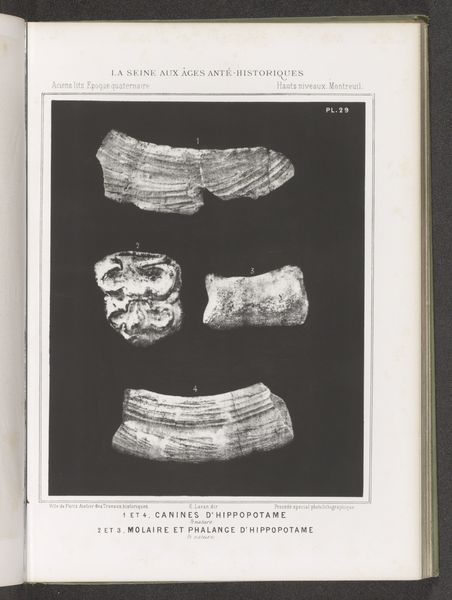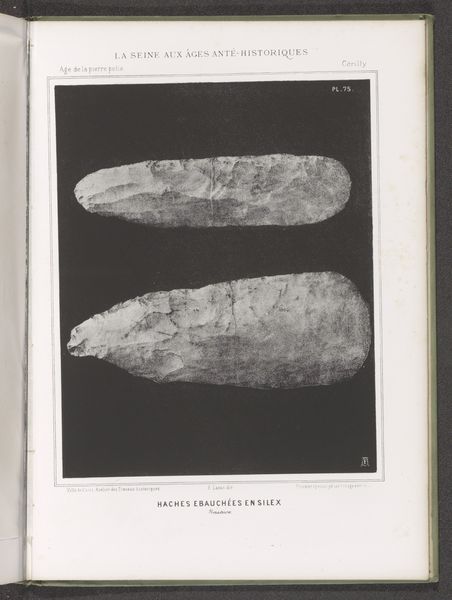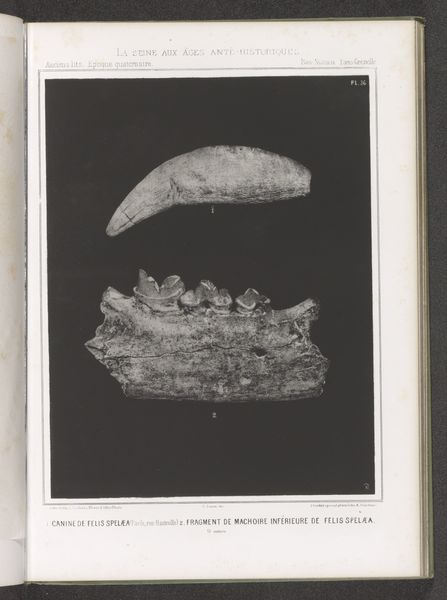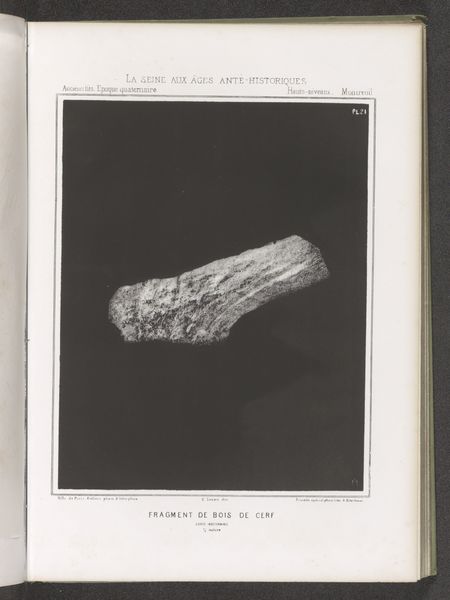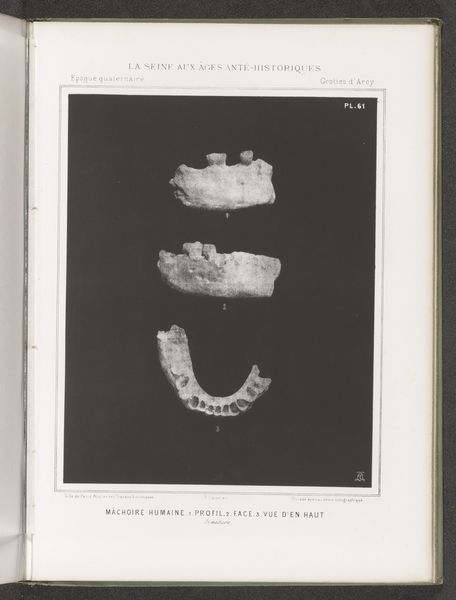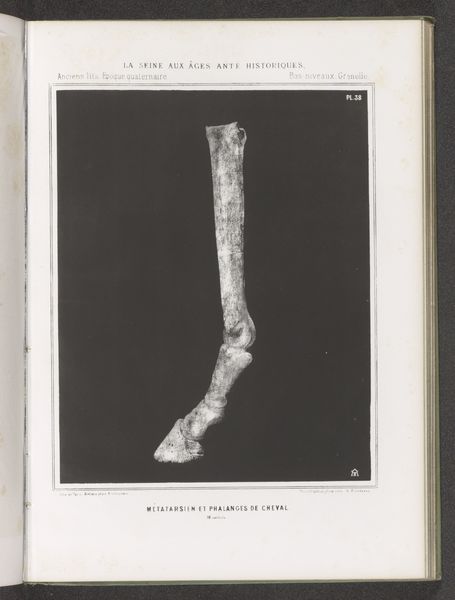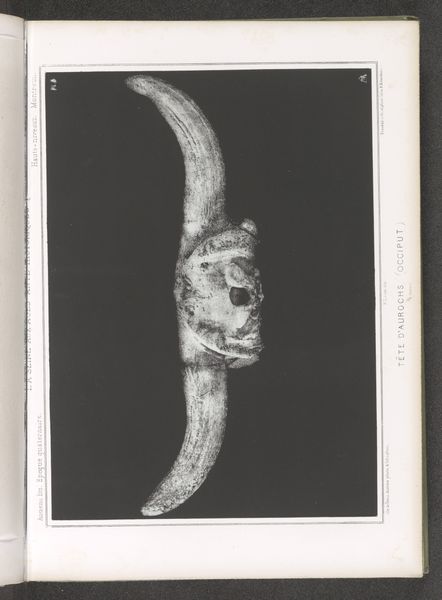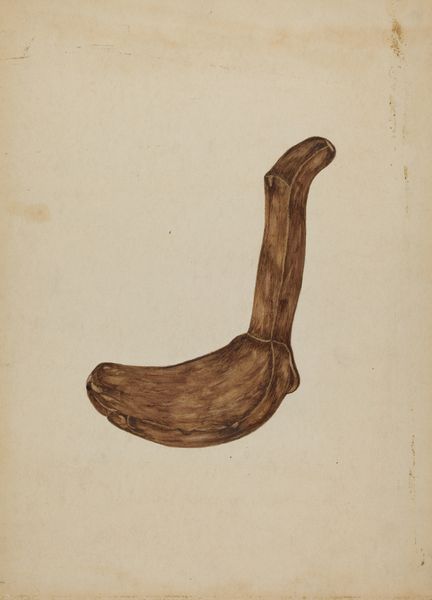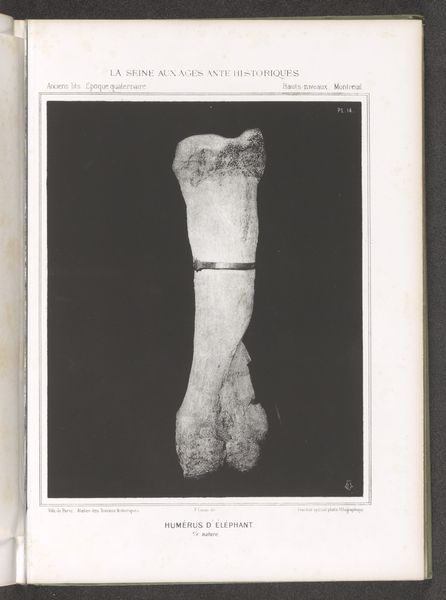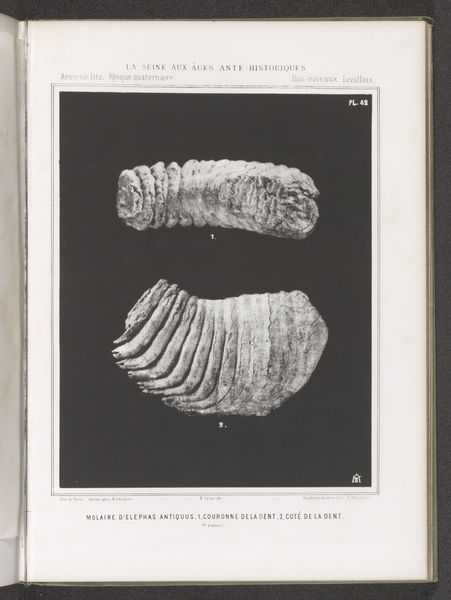
print, photography, gelatin-silver-print
#
still-life-photography
# print
#
photography
#
gelatin-silver-print
#
realism
Dimensions: height 238 mm, width 190 mm
Copyright: Rijks Museum: Open Domain
Curator: Here we have a rather unique item: a gelatin silver print dating back to before 1869, titled "Hoektand van een nijlpaard" – or "Canine of a Hippopotamus" if you prefer. It comes to us from an anonymous photographer. Editor: It’s strikingly stark, isn't it? Isolated against that intense black background, it feels almost…clinical. But the tooth itself has a beautiful, subtle curve. Curator: Indeed. These types of photographs of specimens were not necessarily intended to be artistic. Instead they were scientific illustrations, and would be reproduced using printing methods. Editor: And to display such an object this way can suggest the historical context in which we think about animal remains. Does this speak to colonial practices? Power structures? Or just Victorian-era natural history? It invites speculation. Curator: Perhaps all of the above. The anonymous nature of the photographer complicates matters. If we knew their position, their social and professional standings, it might unlock another layer of meaning. Was the photographer attempting to reveal something about human hubris? Or document findings about paleontology and historical geology? Editor: Good question. Looking at it now, one also can interpret its stillness and that the tooth's being viewed in isolation from other hippopotamuses as commenting on endangered species, which prompts reflections on their existence. Curator: You know, it also underscores how our relationship with nature has shifted dramatically, and even intensified the conversations about human intervention and responsibilities within larger environmental justice concerns. Editor: That is right, but also, to a museum visitor of today, the simplicity of the image, the near absence of context, might in some ways cut through a lot of noise. Maybe there is room for contemplation. Curator: Perhaps its mystery continues to ask different kinds of questions for audiences today than it was designed to answer at its making. Editor: Well, that's one of the enduring powers of art, I think, isn't it? Shifting meanings across time and cultural landscapes.
Comments
No comments
Be the first to comment and join the conversation on the ultimate creative platform.
